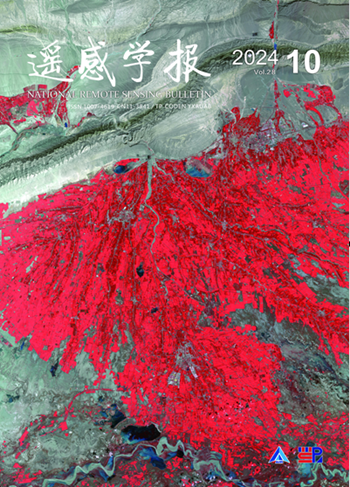Feature Enhancement Network for Object Detection in Optical Remote Sensing Images
引用次数: 40
Abstract
Automatic and robust object detection in remote sensing images is of vital significance in real-world applications such as land resource management and disaster rescue. However, poor performance arises when the state-of-the-art natural image detection algorithms are directly applied to remote sensing images, which largely results from the variations in object scale, aspect ratio, indistinguishable object appearances, and complex background scenario. In this paper, we propose a novel Feature Enhancement Network (FENet) for object detection in optical remote sensing images, which consists of a Dual Attention Feature Enhancement (DAFE) module and a Context Feature Enhancement (CFE) module. Specifically, the DAFE module is introduced to highlight the network to focus on the distinctive features of the objects of interest and suppress useless ones by jointly recalibrating the spatial and channel feature responses. The CFE module is designed to capture global context cues and selectively strengthen class-aware features by leveraging image-level contextual information that indicates the presence or absence of the object classes. To this end, we employ a context encoding loss to regularize the model training which promotes the object detector to understand the scene better and narrows the probable object categories in prediction. We achieve our proposed FENet by unifying DAFE and CFE into the framework of Faster R-CNN. In the experiments, we evaluate our proposed method on two large-scale remote sensing image object detection datasets including DIOR and DOTA and demonstrate its effectiveness compared with the baseline methods.用于光学遥感图像目标检测的特征增强网络
遥感图像中的自动和稳健目标检测在土地资源管理和灾害救援等现实应用中具有重要意义。然而,当最先进的自然图像检测算法直接应用于遥感图像时,性能较差,这在很大程度上是由于物体尺度、纵横比、难以区分的物体外观和复杂背景场景的变化造成的。本文提出了一种新的用于光学遥感图像目标检测的特征增强网络(FENet),该网络由双注意特征增强(DAFE)模块和上下文特征增强(CFE)模块组成。具体而言,引入DAFE模块来突出网络,以关注感兴趣对象的独特特征,并通过联合重新校准空间和通道特征响应来抑制无用的特征。CFE模块被设计为捕获全局上下文线索,并通过利用指示对象类的存在或不存在的图像级上下文信息来选择性地增强类感知特征。为此,我们使用上下文编码损失来正则化模型训练,这促进了对象检测器更好地理解场景,并在预测中缩小了可能的对象类别。我们通过将DAFE和CFE统一到Faster R-CNN的框架中来实现我们提出的FENet。在实验中,我们在包括DIOR和DOTA在内的两个大规模遥感图像目标检测数据集上评估了我们提出的方法,并证明了与基线方法相比的有效性。
本文章由计算机程序翻译,如有差异,请以英文原文为准。
求助全文
约1分钟内获得全文
求助全文
来源期刊

遥感学报
Social Sciences-Geography, Planning and Development
CiteScore
3.60
自引率
0.00%
发文量
3200
期刊介绍:
The predecessor of Journal of Remote Sensing is Remote Sensing of Environment, which was founded in 1986. It was born in the beginning of China's remote sensing career and is the first remote sensing journal that has grown up with the development of China's remote sensing career. Since its inception, the Journal of Remote Sensing has published a large number of the latest scientific research results in China and the results of nationally-supported research projects in the light of the priorities and needs of China's remote sensing endeavours at different times, playing a great role in the development of remote sensing science and technology and the cultivation of talents in China, and becoming the most influential academic journal in the field of remote sensing and geographic information science in China.
As the only national comprehensive academic journal in the field of remote sensing in China, Journal of Remote Sensing is dedicated to reporting the research reports, stage-by-stage research briefs and high-level reviews in the field of remote sensing and its related disciplines with international and domestic advanced level. It focuses on new concepts, results and progress in this field. It covers the basic theories of remote sensing, the development of remote sensing technology and the application of remote sensing in the fields of agriculture, forestry, hydrology, geology, mining, oceanography, mapping and other resource and environmental fields as well as in disaster monitoring, research on geographic information systems (GIS), and the integration of remote sensing with GIS and the Global Navigation Satellite System (GNSS) and its applications.
 求助内容:
求助内容: 应助结果提醒方式:
应助结果提醒方式:


